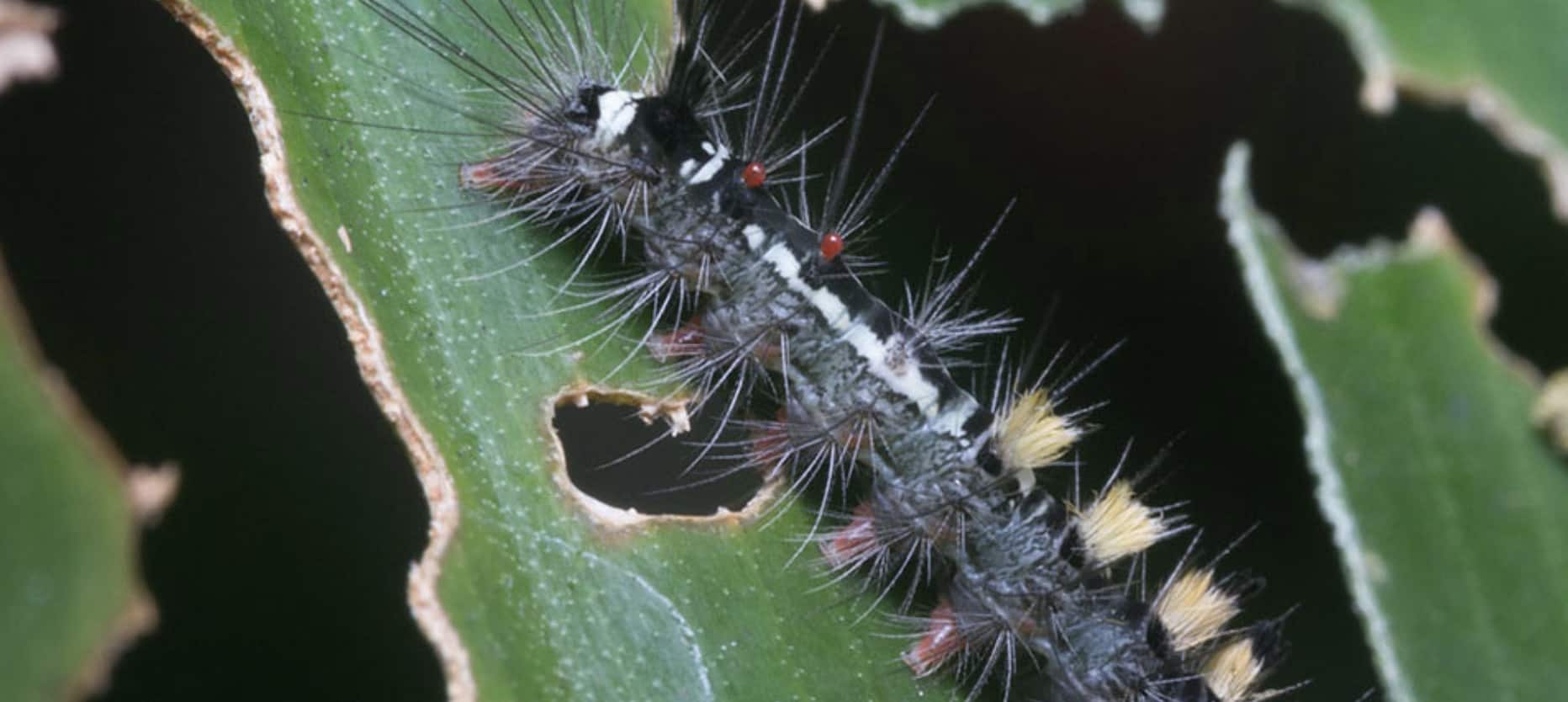Mississauga plans now for 2023 battle against tree-killing bugs
Published November 7, 2022 at 3:54 pm

Mississauga officials are gathering information now to help continue the fight next year to save the city’s trees from an army of invasive, leaf-eating insects.
The City of Mississauga said in a post to Twitter today (Nov. 7) that over the next few weeks they’ll be surveying the population of Lymantria dispar dispar (LDD), more commonly known as the “gypsy moth.”
“Info collected will inform the City’s approach to LDD management in 2023,” the post reads, in part, before then urging residents to “search your property for LDD egg masses and help preserve the city’s tree canopy.”
The post contains a link to a short video showing people how they can find and remove “gypsy moth” egg masses from trees on their property.
Earlier this year, officials wrapped up 2022 efforts in their aerial spray plan to save the city’s trees from the harmful pest.
Under the City’s Aerial Spray Program, low-flying helicopters sprayed areas of the city over several weeks this past spring, concluding their 2022 efforts on June 8.
Over the next few weeks, the population of LDD moths will be surveyed throughout Mississauga.🐛
Info collected will inform the City's approach to LDD management in 2023. Search your property for LDD egg masses & help preserve the city's tree canopy 🌳
🔗https://t.co/RBnHfFQAZT pic.twitter.com/Ib7vxh2Fwr
— City of Mississauga (@citymississauga) November 7, 2022
Officials say the objective was to “target and manage” the leaf-munching caterpillars, which left unchecked can kill trees at an alarming rate.
From that point, City staff said they’d monitor the sprayed areas over the summer and fall to determine the effectiveness of the program.
Staff added that in the years to come, they’ll seek to fine-tune the program so, like Toronto, they can target more specific areas for the invasive pest each spring or every other spring.
Mississauga officials also encourage people living in spray zones to keep an eye on trees on their property for signs of LDD.
They say residents can help by:
- year-round: reporting sightings of LDD to the City of Mississauga
- August through next May: scraping egg masses off trees and other hard surfaces and soak them in soapy water for at least 48 hours
The “gypsy moth” has been an unwelcome presence in Mississauga for years and it’s a serious threat to the tree canopy in several parts of the city as it eats oak trees and other hardwood species.
The aerial spray program protects hardwood trees like maple, oak, elm, ash, poplar, willow and birch.
While the City has used other methods to control the population of the insect, aerial spraying has been determined to be the most effective weapon.
Mississauga forestry staff received $3 million in the City’s 2022 budget with which to stage this year’s aerial battle against the hungry pest.
The City last spray-bombed areas in 2018, which helped slow the LDD population for about two years. But within the past year-and-a-half or so, the tree-munching pest has returned in force in Mississauga and across southern Ontario.
The insecticide used in spraying is called Foray 48B, containing the active ingredient Bacillus thuringiensis subspecies kurstaki (Btk).
The spray produces fine droplets that are small enough to stick to the leaves of trees. Btk is a naturally occurring bacterium found in soil and has been approved by the Pest Management Regulatory Agency, an agency of Health Canada, for aerial use over urban areas.
According to Health Canada, Btk treatment is considered low-risk to human health and the environment. It is only toxic in the caterpillar stage of the LDD life cycle and does not affect adult moths or butterflies.
Native to Europe, LDD was introduced to North America several decades ago. The caterpillars eat leaves from trees during the spring and early summer.
While healthy trees can grow back their leaves in the same season, an ongoing infestation weakens trees and can make them more likely to be damaged from other insects as well.
INsauga's Editorial Standards and Policies








